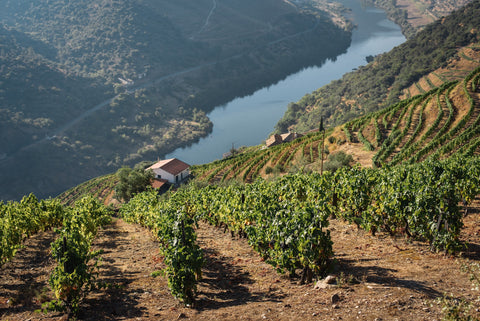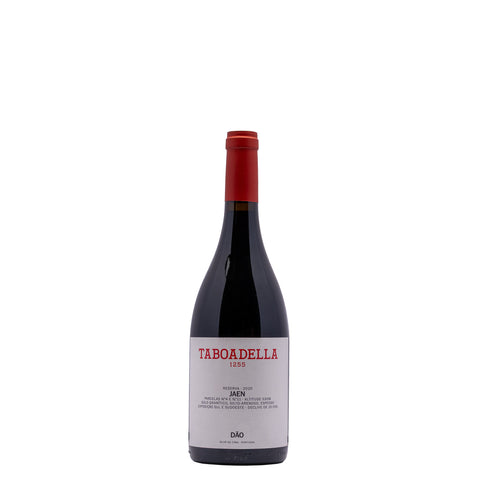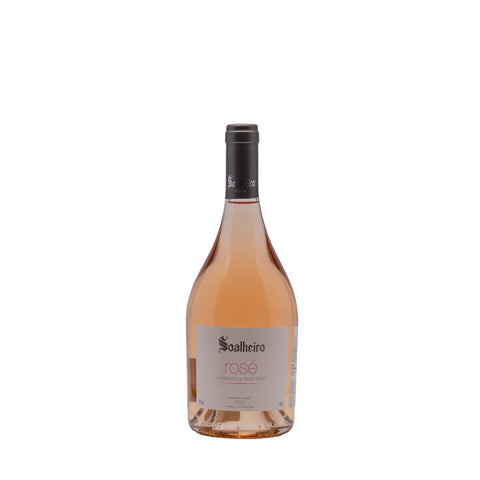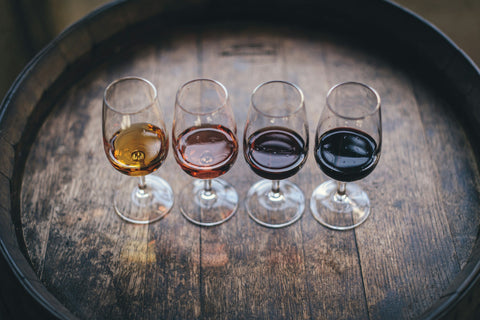Portugal has emerged as one of the new leaders in the global wine industry thanks to the efforts of local winemakers and notable advances in vineyard management over the past three decades. Adjustments in grape variety selection, modernized cultivation and winemaking techniques, and revised legislation have helped to bring Portuguese wines up to par with their Spanish, Italian, and French neighbours, offering a diverse palette of flavours, textures, and aromas that reflect the country’s rich and varied winemaking heritage.
Whether you're a connoisseur looking for great value or a novice looking for an original gift, Portugal is full of treasures that are sure to delight you. But before we present our discoveries, let's first explore the context of this remarkable development.
From Antiquity to modern times: The history of Lusitanian wines
The history of wine in Portugal is rich and dates back more than 2,000 years. The Portuguese have an ancient winemaking tradition and have contributed significantly to the world history of wine.
The first vines were planted by the Phoenicians in the region that is now Portugal. The Romans then extended vine cultivation to the Iberian Peninsula after their conquest in the 2nd century BC, introducing new winemaking techniques.
During the period from the 8th to the 12th century, the country was under Moorish rule, where only the religious use of wine was tolerated. During the reign of Alfonso I (1139 - 1185), the Cistercian abbeys became the main driving force of viticulture.
During the Middle Ages, the Portuguese wine trade flourished with exports to other European regions, notably to England and Northern Europe, including the wines of Osoye, a region near Lisbon. These wines, believed to be the ancestors of Portuguese natural sweet wines such as Moscatel de Setúbal, paved the way for the future wines of Port and Madeira.
However, it wasn't until the 15th century that Portuguese wine achieved international fame thanks to famous Portuguese explorers such as Vasco da Gama and Bartolomeu Dias, who opened new sea routes to India, Africa and the New World (USA). These voyages allowed the Portuguese to export their wine to new markets and helped popularize it around the world.
Decades later, two elements put a stop to the commercial success of Portuguese viticulture: phylloxera (from 1862); a vine disease caused by a variety of destructive aphids that destroyed a large number of vines. Then, the political situation in the country (from 1926 to 1974); a period marked by a long dictatorship known as the "Estado Novo". Following this period of isolation, Portugal joined the European Union in 1986. At the end of the century, there followed a slow restart of wine production; the world (re)discovered a vineyard frozen in time but holding unsuspected treasures.
In about fifteen years, Portugal has gained in competitiveness and is today recognized as one of the greatest wine producing countries in the world, with a booming wine industry and an international reputation for the quality and diversity of its wines.
The major wine regions of Portugal
Portugal is blessed with several major wine regions, each with its own climate, terroir and winemaking tradition making its own distinctive contribution to the diversity of Portuguese wines.

Here are some of the main wine regions in Portugal:
- Douro: The Douro Valley is one of Portugal’s oldest and most iconic wine regions, famous for its Port wine - a fortified wine that is aged in cellars before being bottled. In addition to Port, the Douro Valley also produces high-quality red and white wines. This mountainous region is a UNESCO World Heritage Site and is known for its spectacular landscapes of terraced vineyards along the banks of the Douro River. The wines often win awards in prestigious international competitions.
- Vinho Verde: Located in the Northwest of Portugal, on the Spanish border, the Vinho Verde region is known for its light and refreshing wines, often slightly sparkling. Green wines ("verde" meaning "green” in Portuguese) are primarily white wines, although reds and rosés are also produced.
- Dão: Nestled in the mountains of central Portugal, the Dão wine region is known for its elegant, well-structured red wines, made from traditional grape varieties such as Touriga Nacional and Tinta Roriz.
- Alentejo: Located in the South of Portugal, the Alentejo region is the country's largest wine region in terms of surface. It is famous for its vast golden plains and produces a range of red, white and rosé wines characterized by their richness and complexity.
- Lisbon and Setúbal: This wine region encompasses the vineyards located around the Portuguese capital, Lisbon. Once famous for its Moscatel (sweet wine), in recent years this region has produced a wide variety of wines; from robust reds to crisp whites, sparkling wines and dessert wines.
These wine regions represent an important part of the Portuguese wine industry and contribute to the diversity and international reputation of Portugal's wines.
Characteristics of the vineyards
According to the International Organisation of Vine and Wine (OIV), in 2020 the Portuguese vineyard was the 9th largest in the world - it covered approximately 200,000 hectares making it one of the largest vineyards in the world in proportion to the country's total surface (nearly 3% of the world's vineyards).
The Portuguese vineyard has nearly 300,000 wineries. The vineyard is therefore particularly atomized, with the average surface area of the farms being 1 hectare.
Portugal remained the 11th largest wine producer in the world in 2020. It also remained the 5th largest European producer by volume (OIV, 2021). Portugal produces an average of 6 to 7 million hectoliters of wine per year, with variations from year to year depending on weather conditions and harvest yields. Red and rosé vines represent almost 70% of production (Wines of Portugal, 2021).
Portugal's vineyards benefit from a varied terroir, ranging from coastal areas to mountainous regions. The diversity of geography, terroir and climate combined with its expertise in wine and grape varieties, explains the quality of the wines produced. These vary from one region to another, and their authenticity is preserved.
Here's how these factors interact to influence Portuguese wines:
- Climate: Portugal enjoys a wide variety of climates, ranging from warm, Mediterranean temperatures in the South to cooler, Atlantic climates in the North. This climatic diversity allows for the production of different styles of wine in different regions of the country. For instance, the Douro and Alentejo regions enjoy a warm, dry climate, ideal for the ripening of rich, full-bodied red grapes , while the Vinho Verde region in the North enjoys a cooler climate, favoring the production of light white wines.
- Terroir: The terroir, which includes soil, relief, vineyard orientation and other environmental factors, plays a crucial role in the development of grapes and wine characteristics. For example, the schist soils of the Douro Valley contribute to the minerality and complexity of the region's Port and red wines. Similarly, the clay and limestone soils of the Alentejo promote the production of rich, structured red wines.
- Indigenous grape varieties: Portugal has a unique variety of indigenous grape varieties that have adapted to the country's specific climate and terroir. These varieties bring distinct characteristics to Portuguese wines, contributing to their diversity and regional identity. International grape varieties remain marginal.
- Innovative viticulture: Despite its commitment to winemaking traditions, Portugal has also adopted modern viticultural practices to improve the quality of its wines. Modern techniques such as irrigation management, clonal selection, and the use of oak barrels have allowed Portuguese producers to produce world-class wines while preserving the unique character of their wine regions.
On the whole, Portugal's diverse climate and varied terroir play a vital role in the creation of Portuguese wines, which offer an impressive range of styles and flavours reflecting their rich winemaking heritage.
The main Portuguese grape varieties
Portugal is renowned for its great diversity of indigenous grape varieties (nearly 350 indigenous grape varieties), with producers highlighting the richness and singularity of these varieties in the production of quality wines. It is thus conceivable to grasp the magnitude of the possibilities in the field of winemaking, highlighting the competitive advantage that this offers.
In this article, we present a couple of interesting grape varieties to help you begin your discovery of Portuguese wines with confidence.

Red grape varieties
Portuguese red wines derive their distinctive character from several indigenous grape varieties that are widely grown throughout the country.
Here are some of the main red grape varieties used in red wine production:
- Touriga Nacional: Considered an emblematic grape variety of Portugal, Touriga Nacional is widely used in the production of high-quality red wines, particularly in the Douro and Dão regions. It brings complex aromas of black fruits, a robust tannic structure and a great ageing capacity.
- Tinta Roriz (or Aragonez): Known as Tinta Roriz in the North of Portugal and Aragonez in the South, this variety is widespread throughout the country. It brings aromas of red and black fruits, good acidity and moderate tannins.
- Touriga Franca: Used in blends with Touriga Nacional in the production of Port wines and other red wines from the Douro Valley, Touriga Franca contributes to the aromatic complexity, velvety texture and structure of the wines.
- Tinto Cão: A grape variety traditionally used in the production of Port wines, Tinto Cão brings acidity, elegance and subtle aromas to blends.
- Baga: Mainly grown in the Bairrada region, Baga is a red grape variety that produces full-bodied, tannic wines, often with aromas of dark fruits, spices and damp earth.
- Castelão (or Periquita): Popular in the Lisbon region and the Setúbal Peninsula, Castelão is prized for its versatility and ability to produce fruity, supple and approachable wines in their youth.
- Alicante Bouschet: Although of French origin, Alicante Bouschet is widely grown in Portugal and is often used to add colour and structure to red wines, particularly in the warm southern regions.
White grape varieties
Portuguese white wines are produced from a variety of indigenous grape varieties, each bringing its own aromatic and taste characteristics.
This list includes some of the main white grape varieties used in the production of white wine:
- Alvarinho: Originating from the Vinho Verde region, Alvarinho is a white grape variety renowned for producing fresh, aromatic and complex white wines, with aromas of citrus, tropical fruits and lively acidity.
- Arinto: Also known as Pedernã in some regions, Arinto is widely planted across Portugal. It produces crisp, mineral white wines, with aromas of citrus, green apple and refreshing acidity.
- Loureiro: A typical grape variety of the Vinho Verde region, Loureiro produces fragrant, delicate and elegant white wines, with floral aromas of white flowers and balanced acidity.
- Encruzado: Mainly grown in the Dão region, Encruzado produces complex and structured white wines, with aromas of citrus and flowers, as well as good aging capacity.
- Antão Vaz: Originating from Alentejo, Antão Vaz is a grape variety that produces rich and aromatic white wines, with aromas of tropical fruits, vanilla and a creamy texture.
- Fernão Pires: Also known as "Maria Gomes" in some regions, Fernão Pires is a white grape variety widely grown throughout Portugal. It produces fragrant white wines, with aromas of white flowers, peach and pear.
- Viosinho: Grown primarily in the Douro region, Viosinho is a white grape variety that produces elegant and complex white wines, with floral, citrus aromas and refreshing acidity.
These grape varieties, among others, contribute to the diversity and quality of Portuguese white wines, offering a range of styles and flavours that reflect the richness of the terroir and Portuguese winemaking know-how.
The classification of Portuguese wines
The classification of Portuguese wines is based on several systems, which vary depending on the wine region and the type of wine.
Here are some of the main classifications used in Portugal:
- Indicação de Proveniência Regulamentada (IPR): This system is similar to the Appellation d’Origine Contrôlée (AOC) in France. It guarantees that the wine is produced in a specific wine region and meets standards of quality and typicality. IPR wines are labelled with the name of the wine region, for example “Douro DOC” or “Alentejo DOC”.
- Denominação de Origem Controlada (DOC): Portuguese wines bearing this designation are subject to stricter rules regarding the production area, permitted grape varieties, viticultural practices and winemaking methods. They are generally considered the best wines in Portugal due to their quality and typicality.
- Vinho Regional (VR): This classification covers wines produced in larger wine regions than those delimited by DOCs or IPRs. Wines in this category are subject to less strict rules than DOCs or IPRs, but must still meet certain quality standards.
- Vinho de Mesa: These are table wines, often produced on a large scale and intended for daily consumption. They are not subject to specific rules regarding grape varieties, region or winemaking methods.
In addition to these classifications, there are other indications on bottle labels that can provide information about the style, quality and aging of the wine, such as "Reserva" (reserve), "Garrafeira" (cellar) or "Colheita" (vintage).
These classifications aim to guarantee the quality and authenticity of Portuguese wines while providing consumers with valuable information about the origin and characteristics of the wines they purchase.
The different types of wines
Portuguese wines cover a wide range of styles, flavors and characteristics that reflect the country's rich terroir and winemaking expertise.
Below we present some of the main types of Portuguese wines:
- Port Wine (Vinho do Porto): Port wine , produced in the Douro Valley, is one of the most famous fortified wines in the world. There are several styles of Port wine, including Red Port (Ruby, Tawny), White Port and Rosé Port, each offering a unique range of flavours and aromas. Vintage Ports from exceptional years, are particularly renowned .
- Vinho Verde (Green Wine): Green wines are light, refreshing white wines produced mainly in the Minho region of northwestern Portugal. They are often lightly sparkling and are characterized by their lively acidity, citrus aromas and freshness.
- Red wines (Vinho Tinto): Portugal produces a variety of red wines , ranging from young and fruity to more complex and aged wines. Wine regions such as Douro, Dão, Alentejo and Lisbon are particularly renowned for their high-quality red wines, made from grape varieties such as Touriga Nacional, Tinta Roriz and Baga.
- White Wines (Vinho Branco) : Portuguese white wines offer a wide variety of styles, from fresh and aromatic to rich and complex. Wine regions such as Vinho Verde, Dão, Alentejo and Lisbon produce some of Portugal's best white wines, made from grape varieties like Alvarinho, Arinto and Encruzado.
- Rosé Wines (Rosé/Vinho Rosado): Portuguese rosé wines are produced from a variety of grape varieties and are appreciated for their freshness, fruitiness and versatility. They are often consumed young and are perfect for light meals and sunny days.
- Sparkling wines (Vinho Espumante): Portugal also produces quality sparkling wines, often made using the traditional method. These sparkling wines are produced in different wine regions, including Bairrada, Dão and Lisbon. They and offer an elegant alternative to the more famous sparkling wines.
- Sweet wines (Vinho Moscatel): Some wine regions in Portugal produce sweet wines, such as Moscatel de Setúbal - a fortified sweet wine - made from Moscatel grapes - which is aged for a minimum of 5 years in barrels. These sweet and concentrated wines are often paired with desserts and offer an indulgent taste experience.
- Madeira Wine: Madeira wine is a fortified wine produced on the island of Madeira. Initially, Madeira wine is fortified, following a method similar to that used for Port, and then it undergoes a heating process, either by exposure to hot water or by exposure to the sun. This treatment develops aromas of nuts, caramel and dried fruits. This red wine is known for its ability to age, with some vintages being able to be kept for decades or even centuries - there are Madeira Finest (3 years old), Madeira Reserve (5 years old), Madeira Special Reserve (10 years old), Madeira Extra Reserve (15 years old) and finally a few rare Madeira Vintage. Madeira wine is appreciated for its richness, complexity and unique aromas, making it a sought-after dessert wine and a valuable ingredient in cooking.
These types of Portuguese wines represent just a portion of the country's wine diversity. Portugal also offers a range of dessert wines, single varietal wines, and other unique styles that are worth discovering and enjoying.

Our suggestions for Portuguese wines
Let's move on to the long-awaited step: tasting our magnificent Portuguese wines! Our catalog includes a variety of wines carefully selected from the regions and grape varieties mentioned in this article. They are the fruit of the work of talented winemakers and offer excellent value for money.
The list below offers a few options to accompany the different types of Portuguese wines, highlighting the unique flavours and characteristics of each wine.
Red wines
- Grilled red meats (like beef or lamb): pair them with red wines like Touriga Nacional, Touriga Franca, and Tinta Roriz.
- Meat stews (for example, the famous “Cozido à Portuguesa”): pair them with rich, complex red wines made with grape varieties such as Baga, Trincadeira and Alicante Bouschet.
- Mature cheeses (for example, Alentejo cheese, such as Queijo de Évora): enjoy them with structured and balanced red wines, produced from grape varieties such as Touriga Nacional, Alicante Bouschet and Syrah.
White wines
- Fresh or grilled seafood (e.g. shrimp, clams or grilled fish): pair with fresh, aromatic white wines made from grape varieties such as Alvarinho, Arinto and Loureiro.
- Salads made with fresh fruit (such as orange and onion salad): complement them with fruity and balanced white wines, made from grape varieties such as Encruzado, Fernão Pires and Antão Vaz.
- Marinated or grilled chicken or turkey dishes: Pair them with dry, vibrant white wines made from grape varieties like Alvarinho, Arinto and Verdelho.
Rosé wines
- Tapas and appetizers (like marinated olives, fresh cheese and cured meats): pair with fresh, fruity rosé wines made with grape varieties like Touriga Nacional, Tinta Roriz, and Castelão.
- Summer salads with grilled vegetables (like grilled tomato and pepper salad): complement them with light, aromatic rosé wines made from grape varieties like Baga and Touriga Franca.
- Seafood pasta dishes (e.g. shrimp or clam pasta): pair with crisp, refreshing rosé wines made from grape varieties like Baga, Castelão and Touriga Nacional.
Port wines
- Strong, pasty cheeses (like Stilton or Roquefort): enjoy them with Vintage Ports made from grape varieties like Touriga Nacional, Touriga Franca and Tinta Roriz.
- Dark chocolate or red fruit desserts (e.g. cherry tart or chocolate fudge cake): pair them with Tawny or LBV (Late Bottled Vintage) Ports made from grape varieties such as Touriga Nacional, Tinta Barroca and Touriga Franca.
- Dried fruits and nuts (like dried figs or cashews): pair these with white Ports or Colheita Ports made from grape varieties like Malvasia, Moscatel and Rabigato.
These suggestions are general, and it's important to note that wine choice also depends on the style of preparation and the specific ingredients in a dish. Personal preferences play a big role too, so feel free to experiment to find combinations that appeal to your palate.
And you, what do you think of Portuguese wines? We look forward to reading your opinion! Also, don't hesitate to share your tasting experience, your questions or your recommendations on our Facebook or Instagram page.
Good to know:
- Portugal exports a significant portion of its wine production to markets around the world. Major export markets include Brazil, the United States, the United Kingdom, Germany and China.
- Portuguese wines have won numerous international awards and distinctions over the years, confirming the quality and prestige of Portuguese wine production on the world stage.
























Comments (0)
There are no comments for this article. Be the first one to leave a message!